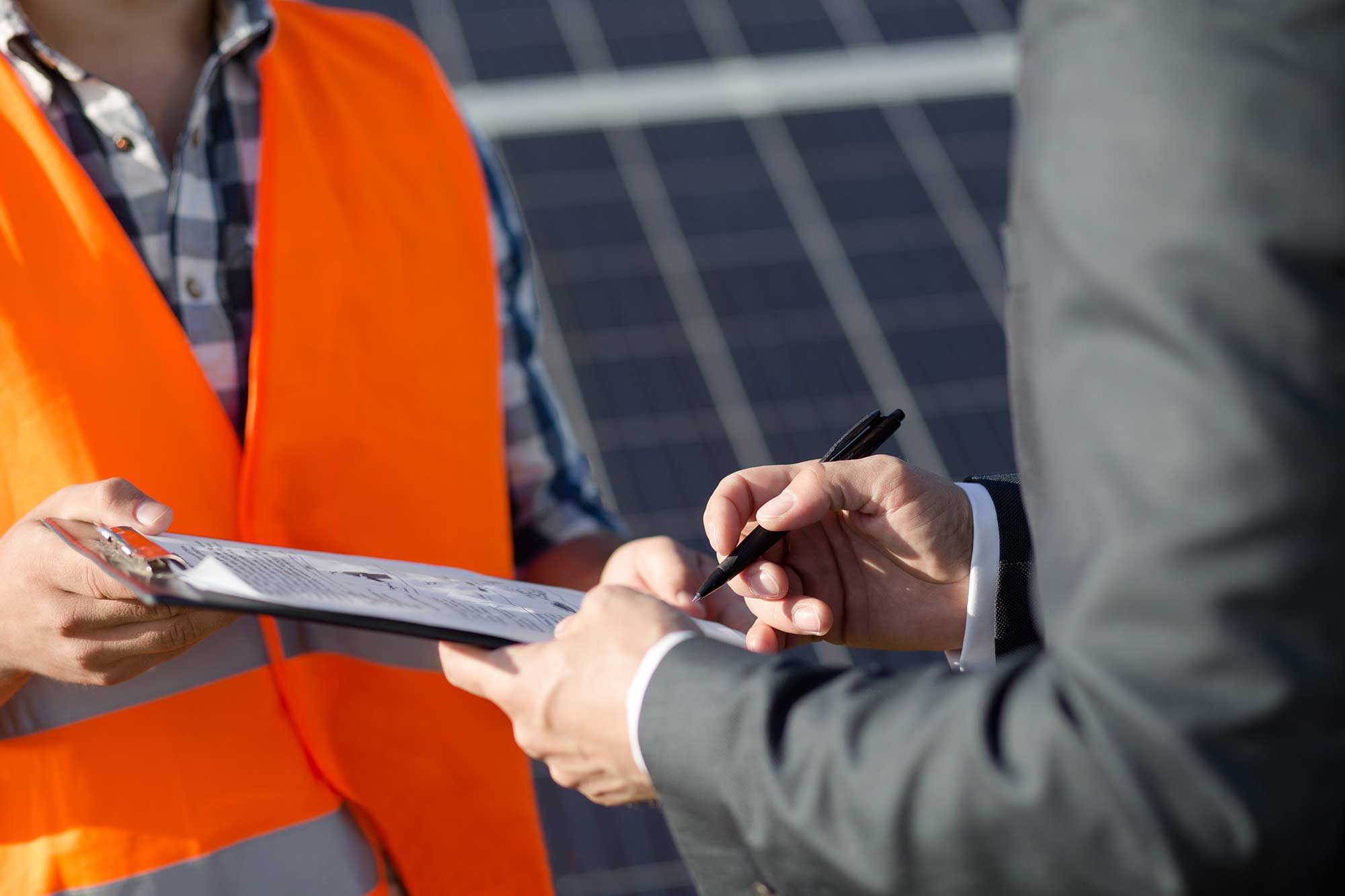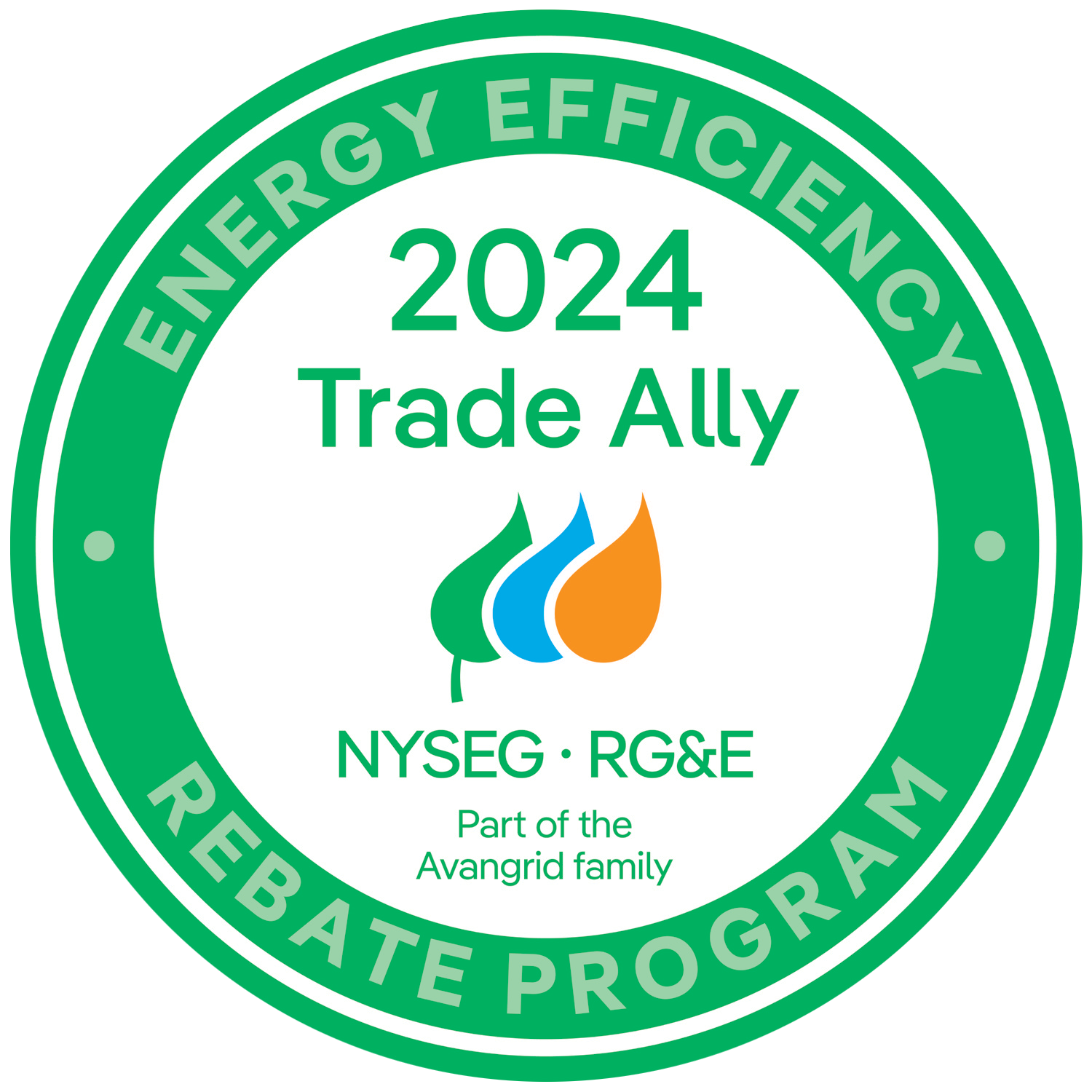Many business owners assume the price tag of solar is too high to manage, but there are a variety of options out there. In fact, government incentives and rebates alone can cover up to 30-95% of the cost. Buffalo Solar, remains up-to-date on all applicable incentives. We offer a range of solutions to support your company's transition to solar, including construction lending, loans, cash investments, leasing options, Power Purchase Agreements (PPAs), and Property Assessed Clean Energy (PACE) and On Bill Financing. Find out how Buffalo Solar can help you.

Incentives at the Federal Level
- USDA Reap Grants can provide up to 50% of the cost for agricultural and rural small businesses.
- ITC can provide 30%-50% of the project cost as a tax credit.
- ITC Purchase can provide 25%-40% of the project cost as a non-taxable cash payment.
Incentives at the State Level
State incentives for solar vary widely depending on the location, and they are subject to change
NYSERDA (New York State Energy Research and Development Authority)
-
NY-Sun Program:
-
NYSERDA's NY-Sun initiative provides various incentives for solar projects, including small commercial and large commercial installations.
-
Incentives are typically provided based on the size and type of solar installation.
-
Buffalo Solar has achieved Gold status as a quality NYSERDA Installer
-
When you contract with Buffalo Solar, they will ensure they process your state's current incentives.
Remember, the landscape of incentives and grants can change, so staying informed about the latest updates, guidelines, and available programs is crucial. Buffalo Solar regularly checks the official websites of the relevant federal agencies and programs for the most current information.
Buffalo Solar currently has a 100% approval rating on its reap grant submissions. Here are some of the steps Buffalo Solar takes to provide you with all eligible solar incentives:
Identify Eligibility:
-
Ensure that your solar project meets the eligibility criteria for various federal incentives and grants.
Understand Requirements:
-
Thoroughly review the requirements for each incentive and grant program. This includes the Investment Tax Credit (ITC), Bonus Depreciation, and the USDA REAP Grant.
Develop a Comprehensive Project Proposal:
-
Clearly outline your solar project, including its goals, benefits, and how it aligns with the specific objectives of each incentive program.
Detailed Budgeting:
-
Provide a detailed budget breakdown for the entire project, clearly indicating how the grant funds will be utilized.
Project Timeline:
-
Develop a realistic timeline for project implementation, indicating key milestones and deadlines.
Demonstrate Need and Impact:
-
Clearly articulate the need for federal funding and the positive impact the project will have on the community, the environment, or relevant sectors.
Collaboration and Partnerships:
-
Highlight any collaborations or partnerships that enhance the credibility and potential success of the project.
Address Evaluation Criteria:
-
Address all evaluation criteria specified by each incentive program. Tailor your proposal to meet the unique requirements of each funding source.
Proof of Compliance:
-
Provide evidence that your project complies with all relevant regulations and guidelines.
Professional Grant Writing Assistance:
-
Consider seeking professional assistance from Buffalo Solar for grant writing if needed. Buffalo Solar is an experienced grant writer and can help ensure your proposal meets all requirements and stands out.
Bonus Depreciation
Many businesses use MARCS depreciation, or the Modified Accelerated Cost Recovery System, to model how an asset will depreciate. Solar has a 5-year cost recovery period. Bonus depreciation allows an investor to recognize 100% of the depreciation in the same tax year the system is placed in service.
It's essential to consult with a tax professional or accountant to get the most up-to-date information on tax incentives related to solar installations, as tax laws can change, and new legislation that may have been enacted.
In summary, bonus depreciation can provide businesses with a significant upfront tax benefit for investing in solar energy systems, making solar a more attractive option from a financial standpoint.
PPAs have been instrumental in the growth of the solar industry by allowing businesses and organizations to adopt solar energy without the upfront capital costs associated with purchasing and installing a solar system. They are a key financial mechanism for making solar projects economically feasible for a wide range of customers.
Here's how a Power Purchase Agreement generally works:
Development and Ownership:
- A solar project developer designs, finances, installs, and owns the solar photovoltaic (PV) system.
Agreement Duration:
- PPAs typically have long durations, often ranging from 10 to 25 years. This extended period helps provide stable and predictable energy costs for the customer.
Electricity Purchase:
- The customer agrees to purchase the electricity generated by the solar system at a predetermined rate (usually expressed in cents per kilowatt-hour) over the duration of the agreement.
Rate Structure:
- A PPA’s payment structure is based on a fixed cost per kilowatt-hour generated.
Benefits for the Customer:
-
Cost Savings: The customer benefits from potentially lower and more predictable electricity costs compared to traditional utility rates.
-
Environmental Impact: The customer may also benefit from the positive environmental impact of using clean, renewable energy.
Responsibilities and Maintenance:
- The PPA typically outlines the responsibilities for operation, maintenance, and performance of the solar system. The developer often retains these responsibilities.
PPA owners typically place a UCC-1 filing on the property notating interest in the solar array equipment. PPA’s do not affect your debt to income ratio. You can close and fund them as quickly as 30 days from approval depending on the project. If you are interested in more information about this route, call Buffalo Solar.
Leasing Options
A solar lease is a financial arrangement where a homeowner or business can "lease" a solar energy system from a solar service provider. Instead of purchasing the solar panels outright, the customer pays a fixed monthly amount for the use of the solar system. Here are the key elements typically involved in a solar lease:
Agreement Terms:
-
Solar leases typically have a fixed term, often ranging from 20 to 25 years. During this period, the business agrees to lease and use the solar panels installed on their property.
Monthly Lease Payments:
-
The customer makes monthly lease payments to the solar service provider. These payments are generally fixed for the duration of the lease, providing predictability in energy costs.
System Ownership:
-
The solar service provider retains ownership of the solar energy system throughout the lease term. This means they are responsible for system maintenance, monitoring, and any necessary repairs.
Insurance and Maintenance:
-
The solar service provider typically covers insurance and maintenance costs for the solar panels. This can include coverage for damage, malfunctions, or any issues that may arise during the lease period.
End-of-Lease Options:
-
At the end of the lease term, the business usually has several options:
-
Renew the lease for a new term.
-
Purchase the solar panels at a predetermined price (often fair market value or a fixed amount).
-
Remove the solar panels if they are no longer wanted.
-
Approval Process:
-
The solar lease agreement typically involves an approval process, and customers may need to meet certain credit requirements to qualify for the lease.
A lease is considered to be an operating expense and is not a debt. It does not affect your Debt to Income ratio. It can close and fund as quickly as 60 days from approval.
PACE
Overall, PACE financing can offer an alternative option for property owners looking to invest in clean energy projects without relying on traditional credit assessments. It is a mechanism that aligns the financing with the property and aims to make energy-efficient improvements more accessible to a broader range of individuals and businesses.
Financing Based on Unleveraged Property Value:
-
PACE financing is not dependent on an individual's credit history. Instead, it is based on the un-leveraged value of the property. This can be advantageous for individuals with less-than-optimal credit or no credit history.
Special Taxation District:
-
PACE financing involves creating a new special taxation district on the property. Payments for the energy efficiency or renewable energy project are then added to the property tax bill, spreading the cost over time.
Eligibility by State and County:
-
PACE programs are not universally available and may be limited to certain states and counties. If your state is eligible but your county is not, Buffalo Solar will make effort to advocate for necessary legislation at the county level.
C-PACE Program:
-
It's mentioned that not all states and counties may be eligible for the Commercial Property Assessed Clean Energy (C-PACE) program, and there might be a need for legislative changes to make it available in a specific area.
Closing and Funding Timeframe:
-
PACE projects typically take 60 to 90 days to close and fund. This timeframe provides an overview of the process duration from initiation to completion.

 NYSEG
NYSEG

